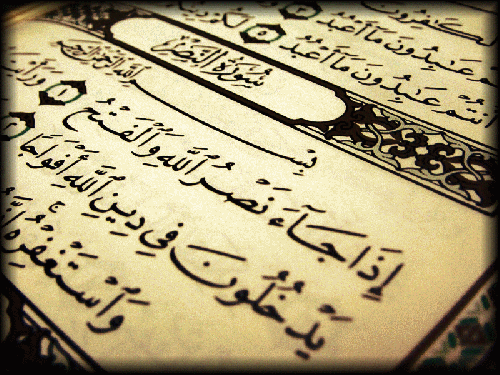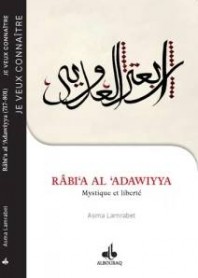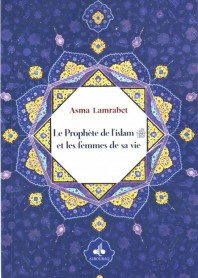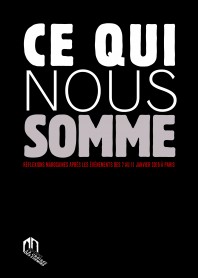In the beginning…
Asma Lamrabet
16-08-2010
One must go back to the very beginning, and to the story of human creation … Universal history and the popular imagination have been indelibly influenced by a single belief that transcends time, cultural space, religious dogmas and the history of civilisations. This belief declares that Adam – as a man – was the first creature of God – and Eve – the woman – was created from one of Adam’s ribs.
This now legendary truth has become the founding myth of woman’s inferiority, the type of concept that one can attest has had a disastrous impact throughout the history of humankind!
It effectively remains undeniable that the assertion of woman’s inferiority in relation to man finds its origin in theological postulations deeply ingrained in the mentalities of the cultures within the Judeo-Christian tradition, as much as those in Muslim lands. Without entering into metaphysical detail these key postulates are, with some minor variations, found in the interpretative texts of the three monotheistic religious traditions and one can summarize their main points through three observations that recur endlessly in the universal religious narrative.
Firstly, saying that woman was created from Adam’s rib, is tantamount to articulating that her creation is, necessarily, secondary, and that Adam – the man – should be considered as the norm or representative of the human ideal.
The second observation claims Eve to be the prime cause of Adam’s expulsion from paradise, as invariably, according to this highly popular account, it is she who incited Adam to transgress the laws of God and taste from the Forbidden Tree. She has thereby become the undisputed muse of the legendary original sin.
And the final postulate is that woman has not only been created from Adam, but she has been created for him! A noticeable difference! And from this was spread the culture of female subjugation that one can attest to today, and which has found its legitimacy in a particular religious discourse. Today, most Christian exegetes consider the narrative of Adam and Eve as being symbolic, and numerous theologians are producing readings distinctive from traditional interpretations. They recognize the existence of numerous contradictions within the Bible and refute the classical interpretation which they consider as literalist.[1]
From an Islamic perspective, or rather within the Qur’anic text itself, this representation of the conception of Eve from one of Adam’s ribs is nowhere to be found. However, it is staggering to see how the various commentaries, religious works as well as the Muslim imagination, have remained deeply imbued with the traditionalist Judeo-Christian reading!
Within the Qur’an, several verses illustrate a quite different conception of the one widely transmitted today. We therefore, firstly find a key verse - that of the sura an-Nisa (The Women):
“People, be mindful of your Lord, who created you from a single soul (nafsun wahida), and from it created its mate (zawjaha) and from the pair of them spread countless men and women […]” Qur’an 4:1
The terminology used in the Qur’anic text in relation to the Creation is crucial to redefine, because the key words of this verse have been interpreted in the majority of cases according to a classical schema organising the hierarchy of human creation. Indeed, in the classical commentaries the term nafs wahida refers to Adam as a male being and zawj as his spouse.
Yet, a more structured study shows that the term nafs, feminine in Arabic, denotes a set of notions that according to the meaning of the text can be translated as: a person, individual, soul, essence, matter, spirit or also a breath of life.
Zawj, meanwhile, indicates the spouse, the pair, or the partner. It is often used interchangeably to refer to the husband or wife and although grammatically speaking it is masculine, it can be used both for men or women.[2] In the Qur’an, it is often used when indicating couples, referring to humans as well as to plants and animals. The Qur’an, for example, states in the following verse:
“And we created pairs (zawjayn) of all things […]” Qur’an 51:49
However, the great majority of Ulama translate the term nafs, into “Adam” as a man or male, and that of zawj as “spouse”, which according to this logic reinforces the classical anthropomorphized representation of the origin of human creation. Because Adam is a man, the term zawj, evoked in this verse of the Qur’an, would therefore correspond to the feminine counterpart, namely Eve or Hawwa. With the first exegetes having greatly drawn on a pre-Islamic religious heritage to buttress their interpretations, the legend of Eve’s creation from Adam’s rib has been widely reported and accordingly endorsed by Muslim scholars.
On the basis of this postulate and aided by certain hadiths, classical commentators deduce that Eve must therefore have been engendered from Adam’s rib.
However, an initial observation in the Qur’an reveals that Eve or Hawwa is not referred to by her name. The significance of the term zawj, or spouse, depends on the meaning of the verse, or siyaq al aya. According to both the concordance and orientation of the verse, the term “spouse” translates either as “man” or as “woman” but it can also - as in the case of this key verse - remain completely abstract, apparently to better highlight the divine will to transcend gender in relation to the first human conception.
Furthermore, the Qur’an never asserts that the Adam of this first creation was male, and even less so, that Eve was derived from one of his ribs! Some ancient as well as contemporary Muslim scholars question and even refute these kinds of interpretations that, in their opinion, appear greatly influenced by ancient scriptural texts.
These thinkers, rather, consider that the word Adam is most often used in the Qur’an in the broadest sense of “human being”, “or human kind”. This is what Imam Muhammad Abdu specifies in his various accounts, where he maintains that Adam also refers to an individual or human being, al-insan or bashar. Adam, as mentioned accurately in this verse seems, therefore, to represent “humankind” in its entirety, implying that in creating Adam, God thus created the human species, both male and female in its original form.
This reading, which we identify as reformist, to differentiate it from the classical one, therefore, advocates a unique provenance for humankind; in other words, a humankind that proceeds from one single substance and one single origin. According to this reformist vision the aim of the verse, which describes the creation, would be to confirm the original human equality, from all perspectives. In contrast to the classical reading that translates the terms nafs as “man” or “Adam”, and zawj as “Eve” or “the first woman”, the phrase nafs wahida could designate here, and according to the reformist reading, “the original essence” while zawj denotes “spouse”. This reinforces the idea of full-fledged human equality, regardless of any consideration to gender and race. Humanity would thereby have been created from this “primary entity” or “primary truth”, as defined by Imam Muhammad Abdu, who by his singular interpretation differs from the rest of the classical commentators.
Indeed Imam Abdu[3] has retained two fairly similar interpretations on the nafs wahida. One version contends that the primary entity incorporates both men and women, and in a second stage this entity evolves to give rise to both spouses and from them, to all men and women. The other version considers that nothing in the Qur’an refutes the idea that this primary nafs is of a female essence. In Abdu’s reasoning this possibility is reinforced by the fact that the term nafs is used in its feminine form while by contrast zawj is used in its masculine form, suggesting the husband - even more so when in another verse one finds: “… so that he (zawjaha: her husband) might find comfort in her… (Nafs)” Qur’an 7:189
Hence Imam Abdu justifies the designation of the sura, inaugurated by this verse, in sura an-Nisa’ or “The Women”. This is a fine example of a feminine reading!
In light of what some present-day commentators retain and without concealing the part of the occult or ghayb that characterizes any sacred Text, one can assert with little risk that in the Qur’anic version, human creation is not expressed through gender. The “Qur’an uses both terms and images in their feminine and masculine forms interchangeably, in an attempt to describe the creation from one single origin and one single substance. It is implicit in a great number of Qur’anic passages that Allah’s original creation was an undifferentiated humanity neither male nor female.”[4]
It would therefore seem that God has created man and woman simultaneously, from one single substance and that these two human beings are going to form the gendered components of the same unique reality. This fully coincides with the notion of dualism of the creation frequently cited by the Qur’an:
“And We created pairs of all things so that you [people] might take note”. Qur’an 51:49
In fact, man and woman as a "pair” or “couple” will confirm the main principle of the Qur’an: the Creator is One while the entire creation is a “pair”. And to speak of “pairs” is to speak of equality from all perspectives. This reformist reading of the human creation seems to be the closest to the Qur’anic message advocating human equality and equity. It is also apparent that the entire narrative concerning the creation of humankind revolves around the core principle of the Oneness or tawhid, which is the very essence of Muslim spirituality.
However, one cannot fail to notice that numerous classical exegetes are drawing upon certain hadiths related to women in general to, more or less, coerce the meaning of the text, especially concerning the Creation, and to extract from it a particular conception, namely the subaltern creation of the woman! This unfortunately legitimizes a certain kind of structural inferiority of women.
Concerning the hadith taken as the reference point for the interpretation of this verse on the Creation, it would seem that there are three existing versions of it more or less alike, according to which the Prophet describes the woman as being “created out of a crooked rib; if you try to straighten a rib, you will break it.”[5]
The study of the prophetic tradition relates that this hadith has been formulated within the framework of a whole set of recommendations relating to male – female relationships, and according to which the Prophet (peace and blessings upon him) was encouraging men to demonstrate benevolence and gentleness towards women. The similarity of these hadiths to the story of Adam and Eve in the Biblical tradition has prompted these scholars to make the association and deduce that Eve has been engendered from one of Adam’s ribs. We note in passing that the hadiths concerned make no reference at all to Adam. This interpretation is traditionally found in the majority of books on tafasir (exegesis) while, as we have seen, nothing in the Qur’an asserts this notion.
One cannot help but be surprised by this connection between the tradition of the Prophet and the Judeo-Christian myth. In fact the relevant hadith has been pronounced within the framework of a series of exhortations made by the Prophet to his companions at the Farewell Pilgrimage while he was cautioning men to treat women well. The hadith concludes with the legendary warning directed at the believers, “be kind to your women”. Here the image of the rib, – once more the Prophet ( peace and blessings upon him ) does not mention Adam’s rib – actually serves as a metaphor, used in an allegorical linguistic style highly valued by Arabic culture of the time, exhorting men to demonstrate sensitivity and kindness towards women. It is important to specify here that these respective hadiths have been expressed by the Prophet not to clarify the biological dimension of the human creation, as correctly argued by certain contemporary Muslim thinkers,[6] the intention was rather to upset male chauvinistic traditions in a very pedagogical manner.
The Prophet ( peace and blessings upon him ), as was his wont, was attempting to imbue his companions with the rules of decency and consideration towards women, and in doing so alleviating the harshness of existing customs.
It is therefore obvious that any interpretation that draws from these hadiths to advance arguments favouring woman as a secondary creation and justifying her debasement, can only be erroneous, and must be considered against the core principles of the Qur’an and the teachings of the Prophet.
These types of allegations, the source for a whole universal legacy of female deprecation, have long justified – and continue to do so amongst many cultures – the logic of oppression and humiliation of the female gender.
A scholar as famous as Imam ar-Razi believes that in the following verse one can discover the proof that women have been created simply to satisfy men’s needs:
“Another of His signs is that He created spouses from among yourselves for you to live with in tranquillity: He ordained love and kindness between you […]” Qur’an 30:21.
“Proof exists within this verse that the creation of women is similar to that of animals, vegetables and all sorts of other blessings … the creation of women is therefore a genuine blessing for us (men) and so, they have been essentially created for us … this can be explained by the fact that woman is weak due to her physical constitution, that she is silly and puerile, like children…”[7]
If woman has been created by and for man it therefore confirms her structural inferiority and the need for her submission. Such assertions constitute a recurrent theme within any conventional religious discourse and concludes by delimiting the ideological framework, wherein lies the deprecation of women through the sacred language of the Qur’an.
It is distressing to observe how often these scholars, so badly influenced by their socio-cultural environment and certain earlier religious traditions, support through their respective interpretations, a canon of literature demeaning women to justify the concept of domination of woman by man in the name of Islam. From this, one can understand how the essence of the religious arguments legitimatizing female subordination, is rooted in this type of interpretation of Qur’anic verses - interpretations which, over time are considered to have fallen under the sway of dogma, relegating the Qur’an itself to a secondary role.
It is widely recognized that within other religious traditions the allegation against the first woman, as being the one who led Adam – the man – out of Paradise is obvious, and that her image as temptress is indisputable. An entire picturesque legend, with the Forbidden Tree, the Serpent and Eve, symbols of the temptation and the fall from Paradise, have been passed down through generations, as part of a number of immutable religious concepts. None of these preliminary suppositions can however, be found in the Qur’an, not even in the form of an allusion.
However, certain illustrious Muslim exegetes relate these types of commentaries in their various works of tafasir.[8] Indeed, an exegete as renowned as Al-Qurtubi relates in his commentaries that it was Eve who first succumbed to Satan and thus dragged Adam along with her, becoming the original source of temptation for man![9]
Yet, nowhere does the Qur’an ever incriminate humanity’s first woman. The Qur’anic verses could not be clearer: it is the first human couple who appear to be jointly responsible, and it has never been the intention of the revelation to apportion guilt to one or other partner.
“We said, ‘Adam, live with your wife in this garden. Both of you eat freely there as you will, but do not go near this tree, or you will both become wrongdoers’”
Qur’an 2:35.
And it was both of them who succumbed to the temptation of Satan:
“But Satan made them slip, and removed them from the state they were in […]” Qur’an 2:36
Then the Qur’an describes how both, regretting their disobedience and dismayed at the manner in which they had fallen, implored God for his forgiveness.
This first transgression, a symbol of the first act of human disobedience, was completely absolved by the Creator. It is one of the key concepts of Islam where the rehabilitation of the human being is wholly assumed by the Creator. No trace therefore, of this notorious original sin, heavily burdening the whole of humankind, the irreparable wrongdoing, as it is described by Christian tradition. According to an Islamic perspective, the Forbidden Tree is a symbol laden with meaning in order to test this first human couple, Adam and Eve. Confronted by their clear-sightedness, lucidity and repentance Allah forgives them.
From this point forth, a form of alliance between God and human beings was sealed through this first couple of humankind. No original sin, rather a type of Original Pact between God and His creatures.[10]
This first transgression has therefore, not been eternally recorded in the fate of humankind as is the case in other religious traditions. God proclaims:
“[…] Each soul is responsible for its own actions; no soul will bear the burden of another […]” Qur’an 6:164
There is no notion of sin in the Christian sense of the term, and much less so an eternal divine punishment with its concepts of guilt, suffering or redemption. The story of Adam and Eve as it has thus been interpreted in the biblical tradition and by extension in the other religious traditions is far removed from the one advocated in the Qur’anic text.
In fact, the Qur’an by retracing the story of the creation of these first human beings depicts what could be designated the first common human experience symbolized by these first two creatures. God first honoured the human species by declaring it khalifa[11] on earth, or the “beneficiary” of His Knowledge. Then, Adam and Eve were elevated to the rank of “learned beings”, or those who “know”, before whom the angels – perfect beings – would bow down.
The angels were bowing down before this human creature because God had instilled it with Knowledge! Knowledge is at the root of the Creation. Human beings are superior to angels, despite the perfection of the latter, because of Knowledge, Reason and Intelligence; qualities inherent to human beings.
The prostration of the angels before the human being is the revelation of Humanism in all its splendour as expressed by the great Iranian thinker Ali Shariati![12]
These two beings created by God underwent their first ordeal in Paradise, when they disobeyed the divine commandment precisely because of their weakness, their imperfection, or in other words their humanity.
This was the first human experience of freedom.
The first human uncertainty, the very first doubt, the first lesson of humility, too… Despite their superiority over the angels, who prostrated themselves before their Knowledge, they were not infallible.
The Qur’an thus offers us a beautiful image of the human experience within the shared life of the couple. Humankind’s first couple will experience this first ordeal in perfect communion. The first man and the first woman have, closely bound, together embarked on the trials of life.
The Qur’an recounts on a harmonious note their fears and their joys, then their disobedience and their hopes, without ever distinguishing either partner, or denigrating one over the other. Together they transgressed the word of their Creator and together they repented. It is also together that they began a new destiny.
A fine example of ordeal, of patience, of remorse and of hope; where the return to God is always liberating. A narrative of the human experience both eternal and endlessly renewed!
- [1] André-Marie Gerard, Dictionnaire de la Bible, Laffont, coll. Bouquins, 1989.
- [2] The term zawj is used in the Qur’an sometimes to designate the masculine (2:230 – 58:1) while at other times the feminine (4:20 – 2:102).
- [3] Muhammad Rashid Rida, Tafsir Al Manar; Dar Alkitab Al Ilmya, Vol 4, p. 265. Lebanon, 1999 (in Arabic).
- [4] From the article by Riffat Hassan, L’égalité entre hommes et femmes, University of Louisville, Kentucky. See www.études-musulmanes.com.
- [5] Hadith reported by Abu Hurayra in Sahih Bukhari and Sahih Muslim.
- [6] Sheikh Rashid al-Ghannoushi, Al mar’a bayna al Qur’an wa wâqi‘ al-muslimîn, p.15, Maghreb Centre for Research and Translation, London, 2000.
- [7] Fakhr ar-Razi, Tafsir al-Kabir, Mafatih al-Ghayb, 11:13.
- [8] Ibn Kathir relates in his tafsir that many scholars, who he names, have drawn from the ancient monotheist sources the narrative of the Serpent and Satan; see p 80.
- [9] Al-Qurtubi Al Jami‘ li-Ahkam al-Qur’an vol. I. p.408.
- [10] Tariq Ramadan: Les musulmans d’Occident et l’avenir de l’islam, Editions Sinbad, Actes Sud, p. 36, 2003. (English translation, Western Muslims and the future of Islam, Oxford University Press, 2003)
- [11] The term khalifa is often translated as vice-regent or vicar.
- [12] Ali Shariati: From a speech titled Man and Islam – see Man’s creation from the Islamic Viewpoint. See www.shariati.net
À propos de l'auteur

ASMA LAMRABET
Native de Rabat (Maroc), Asma Lamrabet, exerce actuellement en tant que médecin biologiste à l’Hôpital Avicennes de Rabat. Elle a exercé durant plusieurs années (de 1995 à 2003) comme médecin bénévole dans des hôpitaux publics d'Espagne et d’Amérique latine, notamment à Santiago du Chili et à Mexico.






